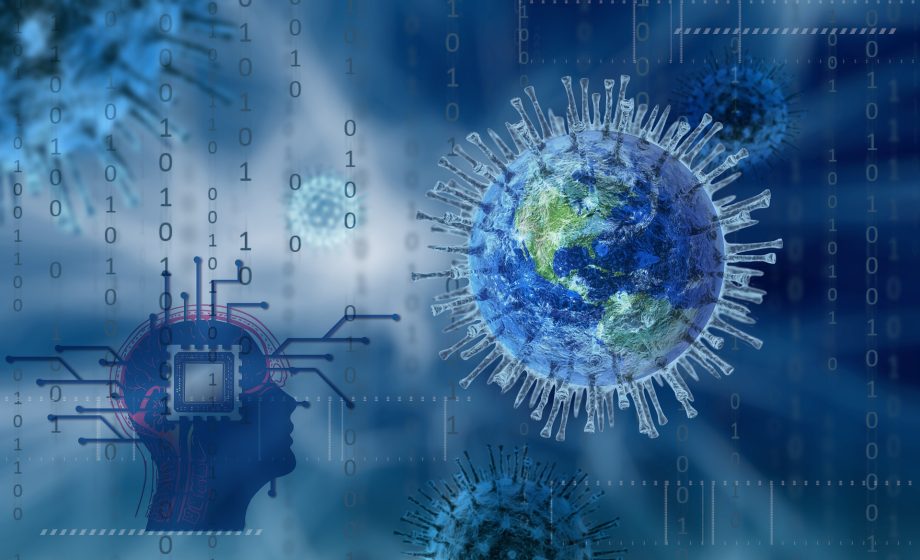COVID-19 cases remain high in the United States–this Memorial Day, confirmed cases were fully six times higher than last year, and the surge continues to spread across the country.
The reported jump in cases may well be just the tip of the iceberg, with many experts believing that, due to a significant reduction in testing, the actual scale of the current outbreak could be many times higher than official estimates. In fact, Seattle-based independent global health research group the Institute for Health Metrics and Evaluation (IHME) estimates that only 13 percent of cases are being reported to US health authorities.
But with many people suffering from “pandemic fatigue” and no longer keen on restrictive measures, it’s crucial to invest in new technological solutions that can continue monitoring the virus without causing widespread disruption. Finding and starting to implement these solutions now is, moreover, a critical pillar of future pandemic preparedness.
‘Vaxxed and Done’?
Even as cases have ticked up, the latest coronavirus surge has not prompted an especially strong reaction among ordinary Americans. Partly, this has been down to other issues—the war in Ukraine and a growing cost of living crisis— crowding the agenda, but it has also been due to a marked shift in COVID-related attitudes. While polls reveal that a majority of Americans do not consider the pandemic to be over, they are also feeling intense COVID fatigue and want restrictions to be softened despite the rising cases.
A Gallup poll from 16 May showed that under a third (31 percent) of American adults were worried about contracting COVID – the lowest recorded by the organisation since summer 2021 – with the majority (53 percent) of respondents no longer making any attempt to practise social distancing from people outside their household. Pushback from the so-called ‘vaxxed and done’ contingent – those who’ve taken all the recommended steps to protect themselves and others – is feeding into this trend.
For health authorities, this shift raises the problem of how best to continue tackling coronavirus at a time when public opinion has swung against conventional containment measures. The difficult middle ground therefore lies in finding and implementing solutions that can continue monitoring and mitigating the spread of COVID-19, but in a way that is not invasive and does not rely on widespread restrictions.
Trialling new tech solutions
Thankfully, there are several cutting-edge technological solutions that are doing exactly that. Some advances, such as that made by Swiss-based technology firm SICPA, are enabling authorities to continue tracking the virus without the need for costly, individualised mass testing. The system they have developed alongside the firefighters with the Bataillon de marins-pompiers de Marseille, which detects the presence of COVID pathogens in aircraft wastewater, has already been successfully trialled in several international airports. The system offers a non-invasive and confidential alternative to conventional testing for passengers, and – by combining the information collected through testing with data from health sources – provides reliable and quick intelligence to health authorities. Moreover, SICPA’s collaboration with the EDEM Solutions Scientific Interest Group means that the system can be easily tweaked to detect new variants as soon as their genomic sequence is extracted.
Other advances have sought to leverage the power of artificial intelligence (AI) to limit the spread of the virus. In the UK, for instance, tech start-up OpenSpace is using AI to predict overcrowding in British railway stations, reducing the chances of infectious spread. The company’s ‘digital twin’ platform measures real-time passenger movement and is being deployed at London’s St Pancras station to monitor social distancing as part of a government-funded project. The system also gives people live capacity information, enabling them to adapt or change their journeys to avoid big crowds.
Another breakthrough in the background monitoring of potential COVID cases has been made through systems that scan body temperature, such as that offered by Remark Holdings’ Biosafety Thermal Kits. The kit can be wall or ceiling mounted, and it is capable of registering the temperatures of more than 120 people per minute without the need for queues or disruption. The success of Remark’s system has already been demonstrated by early adopters in both hospitality venues in Las Vegas and medical providers in Oklahoma.
Optimising medical resources
Machine learning and AI are also being deployed to optimise hospital capacity and resources, which were severely stretched during the height of the pandemic in nearly every country.
In the UK, AI software designed to predict accident and emergency (A&E) admissions three weeks in advance is being rolled out in hospitals after an impressive pilot programme. The software analyses a wide range of data – including emergency calls, COVID-19 infection rates, traffic and weather conditions – to model the number of patients expected to attend A&E on any given day. It’s hoped the system will help speed up efforts to reduce record hospital waiting lists. Hospital managers will be able to manage resources more effectively, increasing bed capacity or staff availability if demand is likely to be high, while prioritising elective care or even lending staff to other hospital when demand dips.
AI-powered remote patient monitoring (RPM) is also increasing efficiencies, reducing healthcare costs and improving clinical outcomes for patients. RPM enables clinicians to monitor a range of conditions by conducting virtual visits – technology that proved especially useful during the pandemic, when in-person care was limited but is just as useful to patients who live in less accessible communities.
Faced with a population now exhausted by COVID restrictions and privations, these types of innovation are crucial to continue monitoring and managing the spread of the virus. More importantly still, these cutting-edge systems will play a crucial part in building greater resilience – in healthcare systems and societies at large – that will ensure that the world will be better prepared for the next pandemic and that its human and economic toll will not be as severe as the last one.

